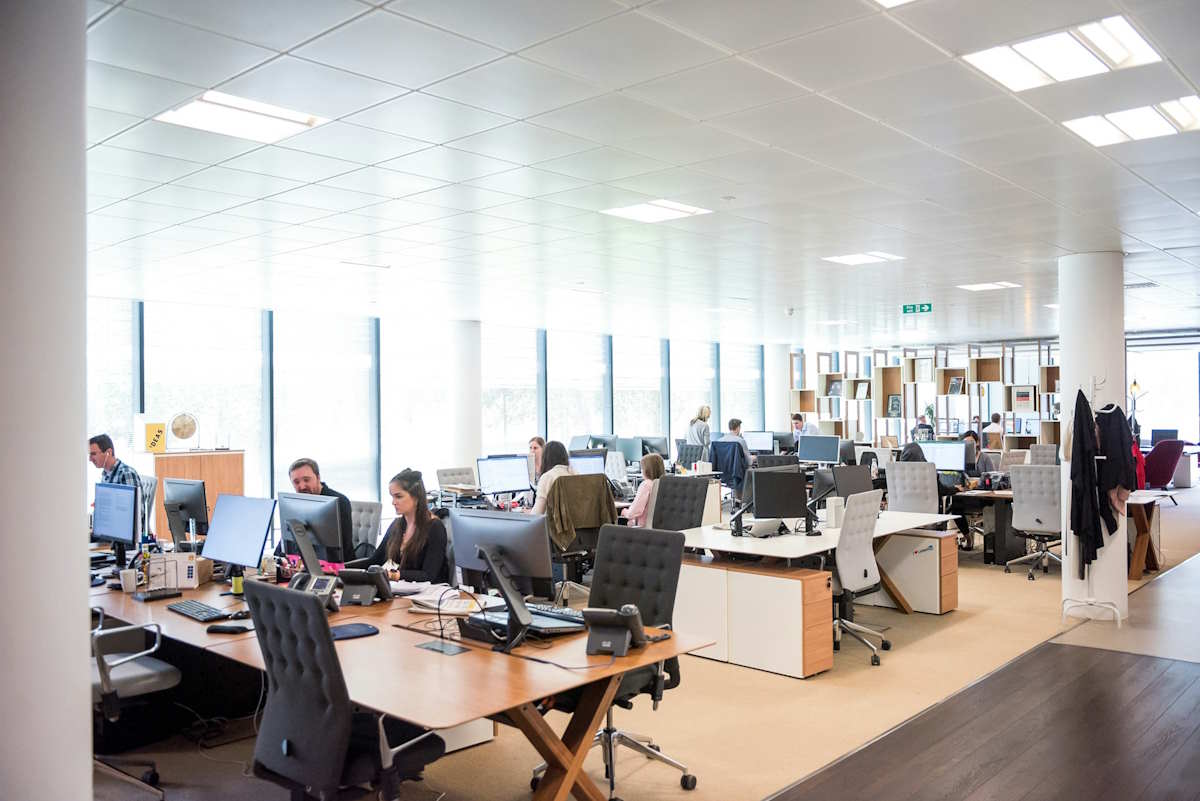Employee comfort is more than just a nice-to-have; it’s a critical element of workplace productivity and overall job satisfaction. When employees are comfortable, they’re more likely to be engaged, motivated, and efficient in their roles. Whether you’re managing a bustling office, a busy warehouse, or an outdoor construction site, ensuring your team feels at ease can lead to better performance and a more positive work environment.
This guide will delve into practical strategies that can help you ensure the comfort of your employees on the job, covering essential aspects like temperature control, ergonomic setups, mental well-being, and more.

Importance of Employee Comfort
Before diving into specific strategies, it’s important to understand why employee comfort is so crucial. Comfortable employees:
Experience Less Stress: A comfortable work environment can reduce stress levels, leading to improved mental health and lower absenteeism.
Show Increased Productivity: When physical discomfort is minimized, employees can focus better on their tasks, resulting in higher efficiency and output.
Feel More Valued: Investing in employee comfort shows that you care about their well-being, which can boost morale and loyalty.
Have Better Health: A comfortable workspace can prevent physical ailments like back pain and repetitive strain injuries, contributing to overall better health.
Make Sure They Are Warm Enough
Temperature plays a significant role in employee comfort. If your workspace is too cold, employees may find it difficult to concentrate and perform at their best. This is particularly true for businesses that operate in colder climates or have work environments exposed to the elements, such as warehouses and outdoor job sites. Ensuring a warm and comfortable environment can be achieved through several measures. First, assess the insulation and heating systems of your facilities. Poor insulation can lead to significant heat loss, making it harder to maintain a comfortable temperature. Upgrading insulation and sealing any drafts can make a big difference. For more immediate solutions, consider getting an industrial heater rental to provide supplemental warmth during particularly cold spells.
These heaters are designed to efficiently heat large spaces, ensuring that your employees stay warm even in challenging conditions. Additionally, encourage employees to dress in layers, providing company-branded jackets or sweatshirts if appropriate.
Provide Ergonomic Workstations
Ergonomics is the science of designing workstations and tools that fit the user’s needs, reducing strain and increasing efficiency. An ergonomic workspace can prevent a variety of physical ailments, such as back pain, carpal tunnel syndrome, and eye strain.
To create an ergonomic environment, start by evaluating your current setup. Look at the chairs, desks, and computer equipment your employees use. Are they adjustable? Do they support good posture? Investing in ergonomic chairs, adjustable desks, and monitor stands can make a big difference. Additionally, provide employees with ergonomic accessories like keyboard trays, wrist rests, and footrests to further enhance their comfort.
Foster a Positive Mental Work Environment
Physical comfort is just one part of the equation. Mental well-being is equally important for employee comfort and productivity. A positive mental work environment can reduce stress, improve job satisfaction, and foster a sense of community among employees.
Encourage open communication and provide opportunities for employees to share their thoughts and concerns. Regular team meetings, one-on-one check-ins, and anonymous suggestion boxes can all help create a culture of openness and trust. Additionally, consider offering mental health resources, such as counseling services, stress management workshops, and mindfulness programs.
Ensure Proper Lighting

Lighting can have a significant impact on employee comfort and productivity. Poor lighting can lead to eye strain, headaches, and fatigue, while good lighting can enhance focus and mood.
Natural light is the best option, as it has been shown to improve mood and energy levels. If possible, arrange workstations near windows to maximize natural light exposure. For indoor lighting, use a combination of ambient, task, and accent lighting to create a well-lit environment. Ensure that the lighting is adjustable, allowing employees to customize their workspace to their preference.
Promote Regular Breaks
Encouraging employees to take regular breaks is essential for their comfort and well-being. Short breaks throughout the day can help prevent physical and mental fatigue, increase productivity, and reduce the risk of burnout.
Create a break-friendly culture by setting clear policies on break times and encouraging employees to step away from their workstations. Provide comfortable break areas where employees can relax and recharge. Consider offering amenities such as comfortable seating, refreshments, and recreational activities to make break times more enjoyable.
Ensuring the comfort of your employees on the job is an ongoing process that requires attention to various factors, from temperature control and ergonomic workstations to mental well-being and air quality. By implementing these strategies, you can create a comfortable and productive work environment that benefits both your employees and your business. Remember, a comfortable employee is a happy and productive employee. Invest in their comfort, and you’ll see the positive impact on morale, productivity, and overall job satisfaction.